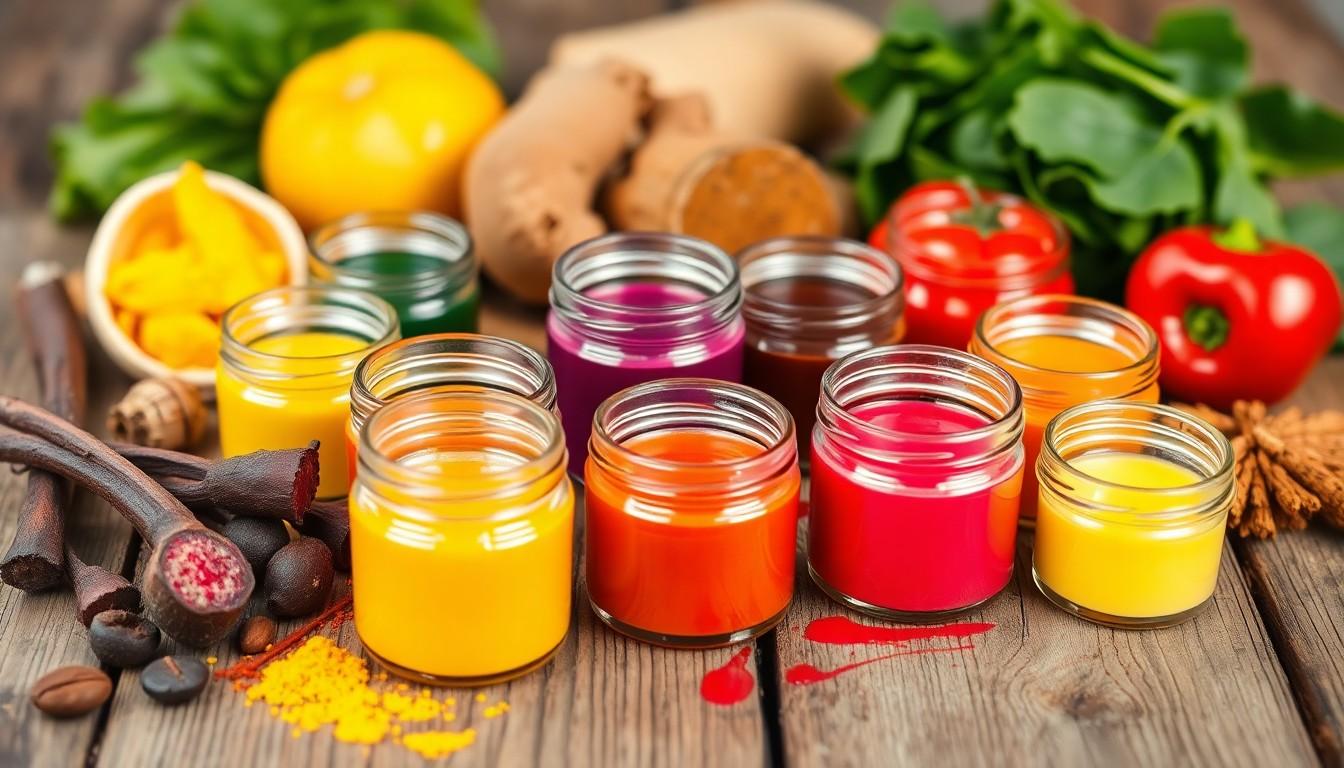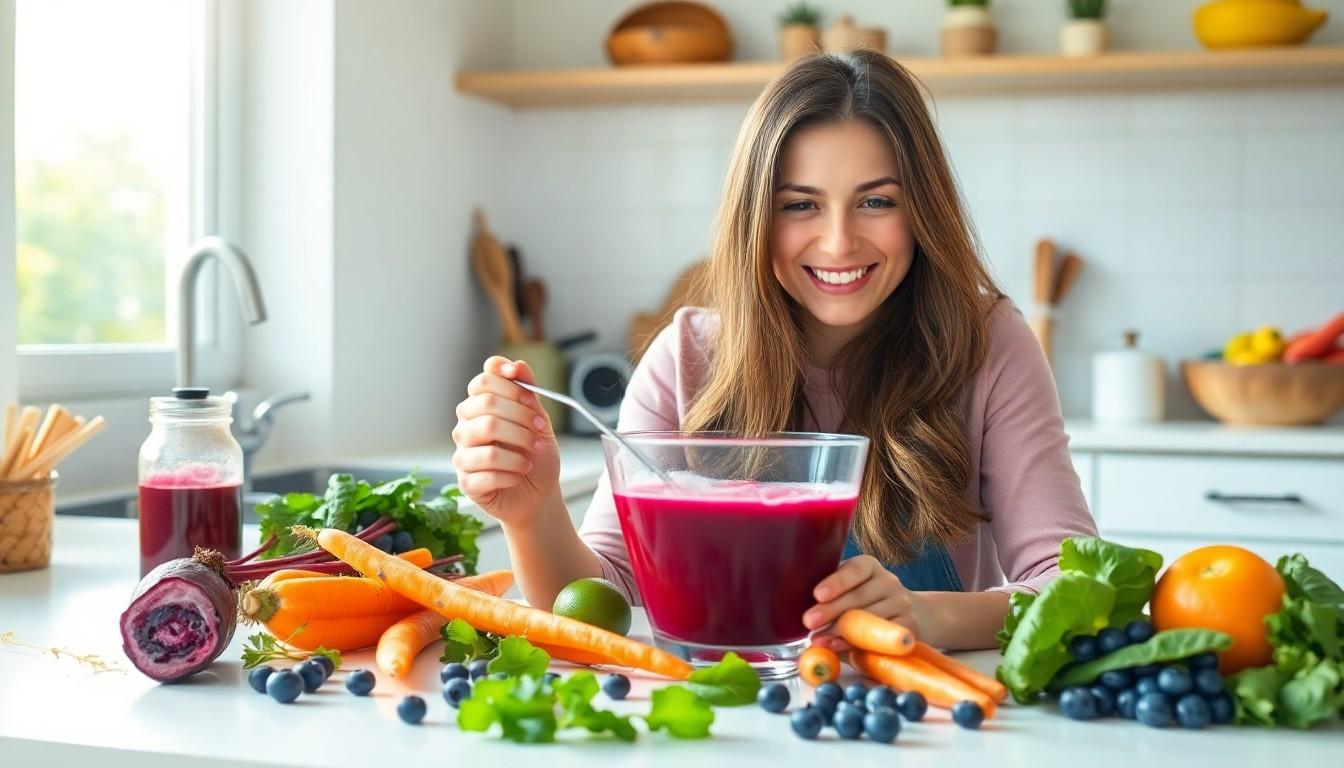In a world where vibrant colors can turn an ordinary dish into a masterpiece, homemade food coloring is the secret weapon every kitchen needs. Why settle for store-bought dyes that might as well come with a side of mystery ingredients? With a little creativity and a dash of nature, anyone can whip up colorful concoctions that are as safe as they are stunning.
Homemade Food Coloring
Homemade food coloring refers to natural dyes derived from fruits, vegetables, herbs, and spices. These ingredients provide vibrant hues without the chemicals often found in commercial options. Creating these colorants involves simple methods like juicing, boiling, or blending.
Beets produce a deep red shade, perfect for adding warmth to dishes. Carrot juice offers an orange tint, ideal for baked goods. Turmeric generates a bright yellow color, often used in rice dishes and pastries. Blueberries yield a rich blue, useful in frostings and desserts. Spinach creates a green dye, adding a fresh appeal to various recipes.
Making homemade food coloring allows complete control over ingredients. This control ensures safety for those with food sensitivities or allergies. Pouring a bit of beet juice or turmeric into batter enhances the flavor while adding visual interest.
Utilizing homemade dyes encourages creativity in the kitchen. Cooks can experiment with combinations to achieve desired shades. Mixing different color sources results in unique hues, enhancing presentation.
Storing homemade colors requires airtight containers in the refrigerator. Each color typically lasts about one week, ensuring freshness for culinary projects. When applying these natural dyes, he or she should start with small amounts, adjusting to achieve the desired intensity.
Benefits of Homemade Food Coloring

Homemade food coloring offers numerous advantages, enriching both culinary creativity and health.
Healthier Alternatives
Natural food coloring provides a safer option compared to synthetic dyes. Homemade colors come from fruits, vegetables, herbs, and spices, eliminating artificial ingredients. For instance, using beets produces a vibrant red without additives. Cooks gain greater control over the compositions, making it suitable for individuals with food allergies or sensitivities. Customers looking for transparency in their diet find comfort in knowing exactly what’s included in their homemade dyes. Additionally, vibrant colors derived from plants contain beneficial nutrients. Using turmeric not only adds golden hues but also provides anti-inflammatory properties.
Environmentally Friendly Options
Utilizing homemade food coloring contributes positively to the environment. By relying on fresh produce, individuals reduce reliance on mass-produced synthetic dyes that often harm ecosystems. Sourcing ingredients locally fosters sustainability and minimizes carbon footprints. Choosing natural colorants over commercial options decreases plastic waste associated with packaging. Many gardeners or local farmers supply fruits and vegetables that create beautiful colors, promoting community support. Homemade dyes often leave fewer chemical residues in water systems compared to industrial products. Those opting for plant-based colors engage in environmentally conscious practices, making a positive impact on sustainability efforts.
Common Ingredients for Homemade Food Coloring
Creating homemade food coloring involves using everyday ingredients that provide vibrant hues without harmful additives. Common sources include fruits, vegetables, and certain spices or natural extracts.
Fruits and Vegetables
Fruits and vegetables serve as primary sources for natural food coloring. Beet juice yields a deep red, while carrots bring an orange tint. Blueberries create a rich blue shade, and spinach delivers a vibrant green. Incorporating these produce options allows individuals to enhance their dishes while benefiting from the nutrients they provide. For a natural yellow dye, consider using turmeric, which not only colors but also offers anti-inflammatory properties. These ingredients can be blended, juiced, or boiled to extract their colors effectively.
Spices and Natural Extracts
Spices and extracts contribute unique tones and flavors to homemade food coloring. Turmeric, known for its intense yellow, can brighten dishes while providing health benefits. Saffron offers a distinct golden hue; a small amount significantly impacts color. Matching colors can also be achieved with paprika, which provides a warm red-orange shade. Vanilla extract, although light in color, can enhance sweetness in specific recipes without overshadowing other flavors. Utilizing spices and extracts not only colors food naturally but also adds depth and culinary richness.
How to Make Homemade Food Coloring
Making homemade food coloring offers a simple, natural way to enhance culinary creations. Various methods employ fruits, vegetables, and spices to achieve vibrant hues.
Step-by-Step Guide
- Select fruits and vegetables for desired colors. Examples include beets for red, carrots for orange, and spinach for green.
- Juice, boil, or blend the chosen ingredients. For instance, boil carrots in water to extract orange dye.
- Strain the mixture to remove solids, leaving only the concentrated color.
- Store the dye in airtight containers in the refrigerator. Homemade food coloring typically lasts about one week.
Tips for Best Results
Using fresh ingredients yields the best results. Fresh beets produce a deeper red than older ones. Combine colors for unique shades, like mixing blueberry and spinach for a purple hue. Experimenting helps achieve desired intensity. Avoid adding too much water, which can dilute the color. Keeping storage containers clean maintains freshness.
Uses of Homemade Food Coloring
Homemade food coloring offers versatile applications in various culinary creations, enhancing visual appeal and health benefits.
Decorating Baked Goods
Using homemade food coloring transforms baked goods into artistic delights. Cakes, cupcakes, and cookies benefit from vibrant tones created with natural ingredients. For instance, beet juice provides a rich red, while spinach yields a lovely green. Bakers often mix food coloring into frosting, allowing creativity with shades and designs. Incorporating natural dyes not only beautifies desserts but also adds nutritional value, ensuring that treats are both appealing and healthier. Experimentation with hues can result in stunning presentations for birthdays or holidays, showcasing individual flair in every bite.
Coloring Drinks and Ices
Colorful beverages and frozen treats captivate the eyes and delight the palate. Homemade food coloring enhances smoothies, juices, and sorbets, making them visually enticing. Blueberries create deep blue shades for refreshing drinks, while turmeric introduces a bright yellow hue perfect for summer popsicles. Bartenders and home cooks alike appreciate the depth and taste natural colors offer, allowing for unique presentations. The absence of artificial ingredients ensures that these colorful concoctions remain healthy options. Families enjoy crafting vibrant smoothies together, promoting both fun and nutrition in every sip.
Creativity and Health Benefits in the Kitchen
Embracing homemade food coloring opens up a world of creativity and health benefits in the kitchen. By utilizing natural ingredients, cooks can create vibrant hues while avoiding harmful additives found in commercial dyes. This approach not only enhances the visual appeal of dishes but also supports sustainable practices and local sourcing.
With simple methods like juicing and boiling, anyone can experiment with colors and flavors to craft unique culinary creations. The ability to control ingredients ensures safety for those with allergies or sensitivities, making homemade food coloring a smart choice for families.
Incorporating these natural dyes into everyday meals elevates not just the aesthetics but also the nutritional value, encouraging a more wholesome approach to cooking.

